

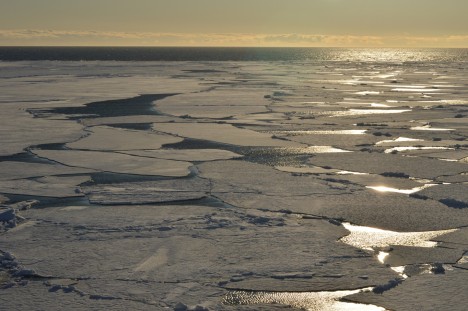
Credit: NASA/Christine Dow
By Christine Dow
We have arrived back safe and sound after 11 days crossing the Southern Ocean. Our exit from Jang Bogo involved one last (very short) helicopter ride taking us to the Araon icebreaker so that they didn’t have to re-break ice to get back into port. I stayed up till the wee hours on the top deck watching us motoring away from my home for the last month, pushing large chunks of sea ice out the way. Some Adélie penguins were also witness to our departure along with snow and cape petrels diving and swooping around the wave tops. It was a very idyllic sight and I was sad to say goodbye to the Antarctic (until next time).

Credit: NASA/Christine Dow
Onward ho. Over the next few days we crashed and bumped our way through the sea ice. This was a good chance to get used to the (very) rolly motion of the boat. Icebreakers are designed with highly rounded keels, excellent for smashing through ice packs but not so great on the stomach. A very good distraction was the on-board table tennis table. Many doubles games were played over the course of the voyage, some more successful than others depending on whether the boat allowed both balls and players to be on a sensible trajectory.
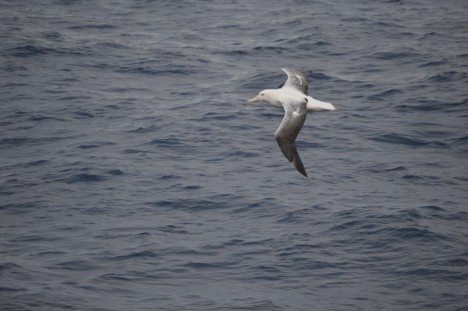
Credit: NASA/Christine Dow
After two days, we were almost out of the sea ice pack when we suddenly had to turn around and return south. There had been a distress call from a fishing boat stuck in the ice and R/V Araon went to the rescue. We successfully hauled the boat free from the ice that it had become wedged on and escorted them to a region easier to navigate through. On the return journey we also stopped to collect some long sediment cores that the Korean scientists will analyze later.
The timing of our journey meant that we had Christmas on board the boat. Our party was on Christmas Eve and involved a veritable feast – the chefs had been very busy all day kindly preparing this for us. One of the Korean scientists also played some clarinet and saxophone music to get us in the Christmassy mood. We even had a Christmas tree, lashed to a railing to stop it flying all over the place.
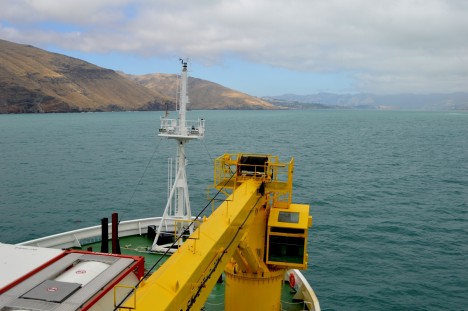
Credit: NASA/Christine Dow
On the 11th day of our journey we could see land. It was very strange to see trees and green again after so long with just hues of blue and white. We had also been slowly getting used to the dark as we moved north following our time in 24-hour daylight; the first sunset of the voyage had been spectacular with giant albatross swooping behind the boat. I watched as we finally docked at the port of Lyttleton in New Zealand, feeling that “normal” life would be a little surreal after our adventure. It was time to say goodbye to our friends and colleagues and go home, just in time for the New Year. After such a trip it’s not surprising that one of my resolutions for the new year is to get back to the frozen continent…some day.
By Christine Dow
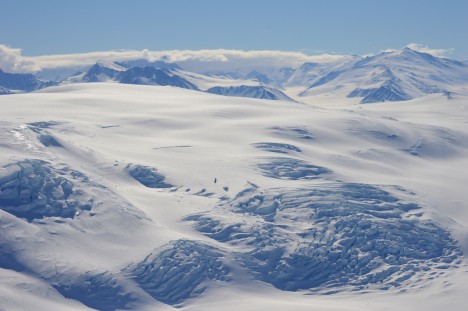
Credit: NASA/Christine Dow
The big day had arrived. We were due to fly to our tiltmeters to collect the data that they had been gathering for two weeks. once this was the first time we had ever set these instruments up in the field, all fingers were crossed that we had been precise enough in initially leveling the meters so the data were in range and also that the solar panels hadn’t ended up covered in snow.
We had a spectacular flight, cutting over the end of Priestley Glacier and skirting helicopter-sized crevasses on the mountain behind our field site. Despite a bit of wind on the Nansen ice shelf, it was as calm on the Comein Glacier as it has always been for our visits. It’s such a peaceful, sheltered spot that I feel a holiday cottage wouldn’t be amiss. Perhaps too long of a commute for an average Friday afternoon, however.
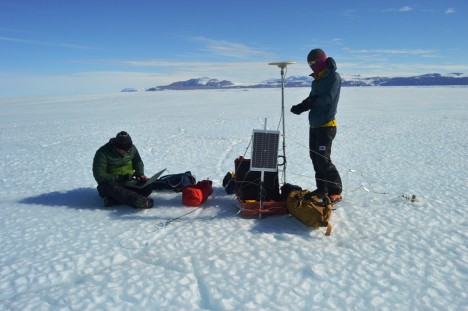
Credit: NASA/Christine Dow
One of the tiltmeters (which are in black boxes) had become exposed and, because black materials absorb heat whereas white materials reflect it, had caused a bit of local melt which had trickled down the side of the box and refrozen. The upshot of this was that the entire box, battery, and straps were encased in some pretty solid ice. Fun! Commence some delicate hacking with ice axes so that we didn’t snap the wires coming out of the box. Finally having reached the interior, we nervously extracted the SD card and Ryan pulled the data off onto the computer. Success! Some excellent (and exciting) looking data showing tidal cycles. Tiltmeter two was easier because it hadn’t caused local melt of the snow so we could quickly retrieve the data. Again, some very interesting outputs. We want to thank John Leeman, an engineer from Penn State, for building us some happily working tiltmeters. Of course having disturbed the tiltmeters I had to reset them back to full level, which required sitting for 10 minutes enjoying the view while very delicately adjusting the little leveling legs.
We had just enough time to collect data from one of the GPS closest to the tiltmeters. All looked well apart from our tethers, which had come loose because of melt on the surface. We had one bamboo tether and one metal peg. The metal had heated up and melted a groove in the ice as it was pulled along, whereas the bamboo had stayed where it was supposed to. We tightened the wire as much as possible but we would have to return to this site with some more bamboo later.
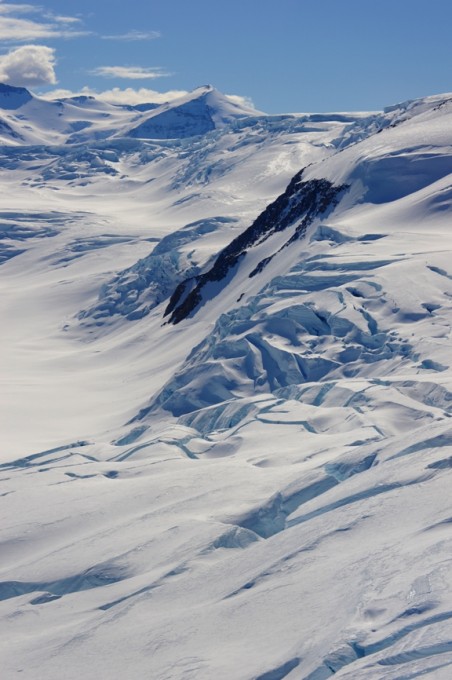
Credit: NASA/Christine Dow
Dinner back at base was a happy affair, having achieved success for at least three of seven of our instruments. The chefs had even made some pizza for us, which was a nice treat. The only unfortunate aspect of the day was that I had forgotten that in areas with 24 hour sunshine and highly reflective snow surfaces it is essential to put sunscreen up your nose as well as on it. Burnt nostrils are not fun, but they’re worth it for some nice data.
By Christine Dow
We made it to Antarctica in one piece! After a delightful 3 am start, we boarded the Safair plane that was to take us to the Antarctic along with Korean, Italian and French scientists. What followed was a somewhat chilly, noisy, cramped 7-hour flight. However, the views out our tiny window as we approached and then flew over Antarctica made it all worthwhile. We landed on a sea ice runway in front of the Italian Zucchelli station, with an impressively long run in, and then stepped out into bright sunshine and a “refreshing” breeze. The Antarctic! What a spectacular place. We were surrounded by mountains and ice and sea ice as far as you can see. Ryan traveled the 7 kilometers to Jang Bogo in a “Piston Bully” tractor, but I was lucky enough to get driven over in a specially adapted Kia SUV with heated seats. What luxury! On the way over, we drove past some basking Weddell seals and seal pups enjoying the sunshine.
Jang Bogo from the outside looks like a space ship and the inside does not dispel this imagery. It was only built in the last couple of years and has all the mod cons. There’s a greenhouse, hospital area, small gym with climbing wall, espresso machine, wi-fi throughout, and even humidifiers in each room. An intercom announces meals with cheery music (including breakfast at 6:50 am, which is a slightly disconcerting way to wake up if you’re not expecting it). The best thing by far is the view from the window. I can see an impressive iceberg, some more seals and the terminus of Campbell glacier. Flags from the countries representing the people staying at the base are flying outside including Korea, Japan, New Zealand, the US and the UK.
We were only able to bring one GPS and one tiltmeter with us because of weight restrictions on the plane. The rest of our equipment will arrive next week. In the mean time, we are going to have to examine the planned field sites so we are expecting a helicopter flight soon. More on it later!